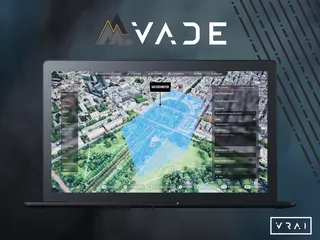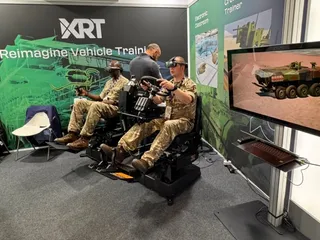Embracing Embraer – 50 Years On
Contact Our Team
For more information about how Halldale can add value to your marketing and promotional campaigns or to discuss event exhibitor and sponsorship opportunities, contact our team to find out more
The Americas -
holly.foster@halldale.com
Rest of World -
jeremy@halldale.com

2019 marks the 50th year since the Brazil-based aircraft manufacturer Embraer was created. Chris Long visited the OEM to learn their go-forward strategy for commercial and business aircraft.
Across a half-century, Brazilian aerospace conglomerate Embraer S.A. has built increasingly ambitious and complex aircraft and, with those, has also established an impressive reputation for innovation and excellent engineering. That has required a long-term view and commitment, with the resilience to work through the global challenges of recessions and political upheavals. Now with some 8,000 aircraft delivered, and with continuing development, the Embraer strategy of identifying underdeveloped market areas and fulfilling those needs is carried forward by the lead products in Commercial (the E2 series of single-aisle jets), the Super-Mid-Sized Executive Jets (Praetor 600), the light-attack aircraft and advanced training A-29 Super Tucano, and military transport/tanker (KC-390).
An Expanding Product Range
Naturally enough, the start point was to produce relatively modest aircraft, but right out of the box the early aircraft such as the Bandeirante and Ipanema quickly established themselves as both robust and effective workhorses for classic regional and austere agricultural operations. The move to executive jets with the Phenom series also went well, and the addition of commercial jets in the form of the E-Series of single-aisle aircraft of less than 150 seats proved to be a success. In parallel, the development of the turbo-prop military trainer, the Tucano, was a step into that military market. All of those foundations continue to be built on, and the current and future programmes retain innovation as the key influence, with exciting options in prospect.
One uncertainty, hopefully to be resolved by the end of the year, is the acquisition of a large part of Embraer by Boeing. The uncompromising reality is that, to gain further market share, Embraer needed to increase its critical mass. Now that the new organisation, Boeing Brasil - Commercial (BBC) has been officially announced as a joint venture with 80% owned by Boeing and 20% to Embraer, the process of defining who does what and who has what responsibilities is still being carved out, but a view is that this will create new opportunities to boost further expansion for the core products.
Training as a Revenue-Generator
The training and maintenance support is handled by Embraer Services & Support. Training of both technicians and pilots is catered for, with third parties covering the pilot training. The overreaching programme is called “TechCare”, and operates on a 24/7 basis to cover all aspects of post-purchase technical support. A stand-alone business unit, in 2018 this division generated 19.3% of Embraer’s net revenue. As one would expect, there is an extensive global presence of Training Centre Network and Field Support teams, and there are some 77 flight simulators available around the world. Prior to the FFS training, Embraer provides lead-in training on desktop FMS devices.
The FFSs are primarily operated by partners CAE and FlightSafety International, whose distributed reach provides training options close to the customer. Two major facilities are located in Europe, one with FlightSafety in Paris, the other in Amsterdam under the Embraer CAE Training Services (ECTS) banner.
The latest addition to the choices is the new training centre in Johannesburg, South Africa, which will bring support to African customers – a market which has been identified as holding great potential for further growth for Embraer products.
One differentiator which is highlighted as a consequence of the diverse product range is that the number of individual customers is very high. The executive jets are frequently owner-operated, with a wide range of roles and experience which require tailored training both for initial and recurrent qualifications. This, of course, is alongside customers of scale – the executive-jet fleets, commercial airlines and military operators.
The lifeblood of the Embraer operation is the constant flow of highly skilled and motivated engineers and technicians. Without the innovation that they bring, and the blending of that talent with the experienced team, the continuing evolution would be a major challenge. Fortunately, given the respect with which Embraer is held, recruiting from the major universities in Brazil is not an issue, and the ties are very close. Each year some 15 of the best graduates are selected for high-level entry. The high-tech nature of the business is attractive, and the aim this year is to employ a further 220 people, primarily for the design and production teams.
The challenge is not only to recruit them, but to retain the trained personnel, who, particularly with the later generation, are attracted to the wider global market once the CV is strong enough. The existing production facility at São Jose dos Campos continues to serve well, but the increased level of production, and in particular the manufacture of the much bigger KC-390, has resulted in the build-up of the facilities at Gaviao Peixoto, one hour’s flight away. This has created a further 2,600 jobs, and the base has the capacity to expand if necessary. The accent is on the military markets, with the production of Tucano and Super Tucano sitting alongside the KC-390 and the updating of an earlier generation of military aircraft.
An interesting observation by Johann Bordais, president and CEO of Embraer Services & Support, is that – counter-intuitively, the older, experienced operators have been far quicker and effective than the later, younger, entrants. Further examination showed that the older guys not only had more experience, but, more importantly, they read the detailed instructions in the manuals, whereas the new arrivals tend just to scan the images and thus are not able to join the dots on the run-out of the entire process. This new habit of bypassing written instructions in order to go directly to the visual pattern has been a puzzle, but one which, through the production of videos to illustrate the step-by-step procedure, now seems to be addressing those new learning habits.
Training those new entrants falls to the Embraer Training Academy, on site at the principal production facility close to São Paulo – São Jose dos Campos. The Embraer Training Manager, Wladimir Janzkovski, highlights the expansion of this unit, as it will grow at a nearby site which will provide two bays for new full flight simulators – the first will be for the KC-390 in support for the Brazilian Air Force and the Entry Into Service for all other KC-390 customers. This FFS is being manufactured by Rheinmetall Electronics GmbH, based in Bremen, Germany, and is expected to be ready in November 2020.
To ensure the drive for competence in the training delivery, all the instructors are trained in house, and the software and training programmes are also developed here before they achieve the approvals granted – so far by the Brazilian national aviation authority, Agência Nacional de Aviação Civil (ANAC), as well as EASA, the Chinese CAAC, and shortly for the Australian CASA.
Locally produced multimedia-based training (MBT) has produced VR for maintenance training, and this will be introduced in 2020. For instance, one of the completed programmes teaches the engine run-up procedures, and the virtual cockpit can be used as the basis for many other checks and procedures. To keep costs under control the trick has been to use COTS as much as possible, so that the goggles can enable the trainee to work with an instructor avatar. That means that the training can be carried out remotely if required. The Academy will also be developing an MSTD for E2 training.
There is limited demand for cabin crew training by the OEM, but a three-day course for initial cabin attendant training is provided in time for first delivery. When necessary the protypes of the airframes are used for the training in São Paulo of airline instructors for the first customers. This type of training will be stepped up in South Africa, with the provision of a door trainer and an over-wing trainer for the E1 aircraft produced by RP Aero, with a further unit for use in China equipped with a cabin crew trainer.
Ab Initio Pilot Training?
In the light of high demand for new pilots, the subject of ab initio pilot training is under consideration. The reality is that most of the aircraft in the Embraer civil aircraft inventory are entry-level platforms, with the inevitable consequence that young pilots are often keen to move on to heavier metal. Retaining them long enough to recover the training costs is a challenge, so becoming involved in that early training is problematic (as it is for virtually all operators), but it may prove to be essential.
Future Energy
Very much in the spirit of exploring and fostering innovation, Embraer has established a separate entity, EmbraerX. Antonio Campello, President & CEO of EmbraerX, has the primary task of developing disruptive technology to create an EVTOL aircraft for use in urban environments. A small, highly energetic team are well advanced in the process and are producing encouraging results. Such a platform cannot exist within present air traffic management systems, so partnerships with other disruptive players, Atech – local specialists in ATC management and system integration, and the US-based Harris, a leader in geospatial systems and services, air traffic management and environmental solutions, are engaged in developing a practical Urban Air Traffic Management (UATCM).
Other avenues to the future are being examined and work is underway to identify critical issues and to select the most promising of exponential technologies. Nothing is excluded, and these range across the use of big data, cloud computing, 3D printing, artificial intelligence, applications of blockchain, autonomy, nanotechnology, robot assistance, electrification, emissions, renewable energy, adapting to human performance, aircraft and propulsion efficiency, all hopefully leading to more sustainable aviation.
Embraer is a proud national symbol for Brazil. For the whole country it symbolises world-leading technology and success, and consequently is an aspirational model for future generations of innovative thinkers across the entire range of aeronautical disciplines. Long may that continue.
Published in CAT issue 4/2019


